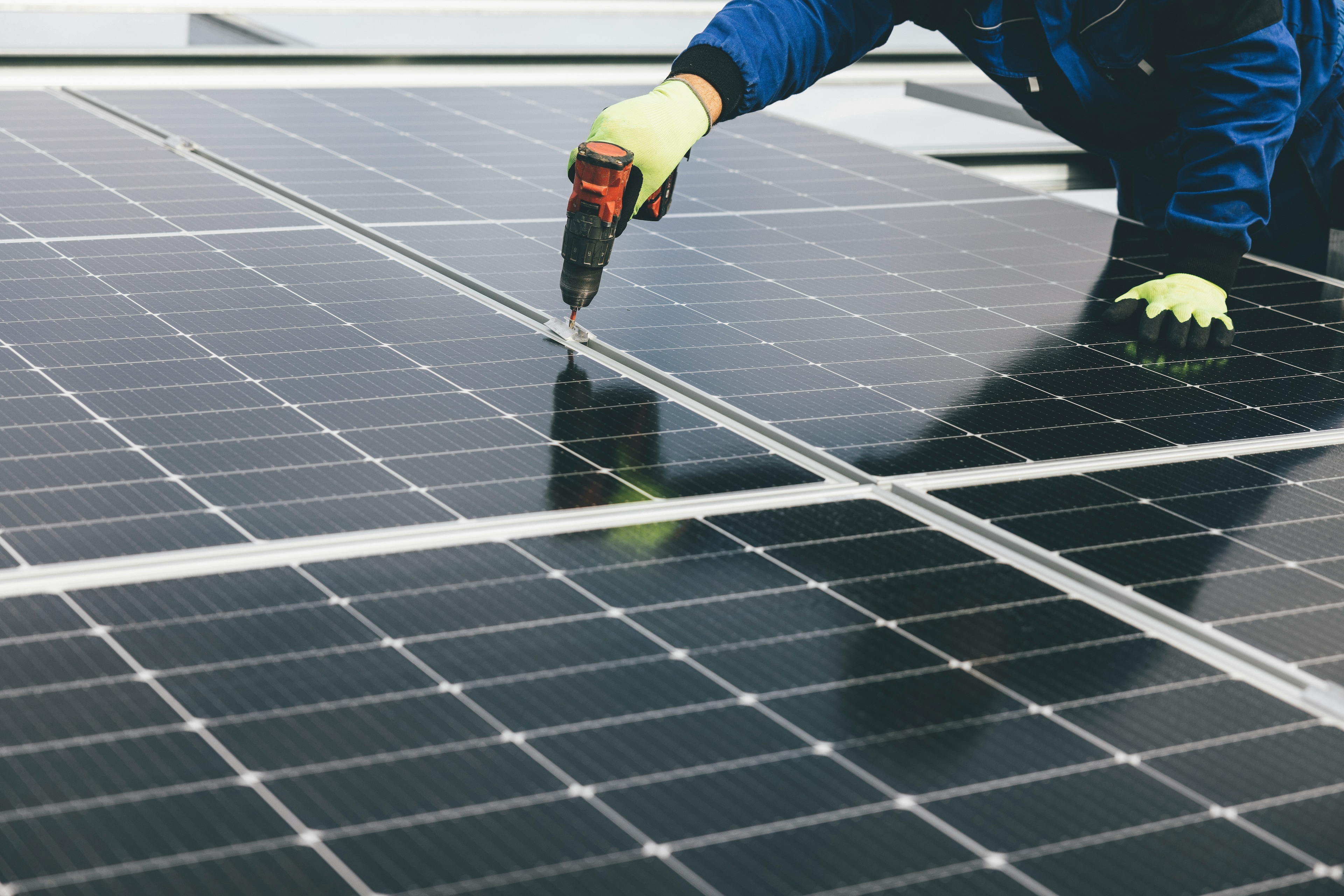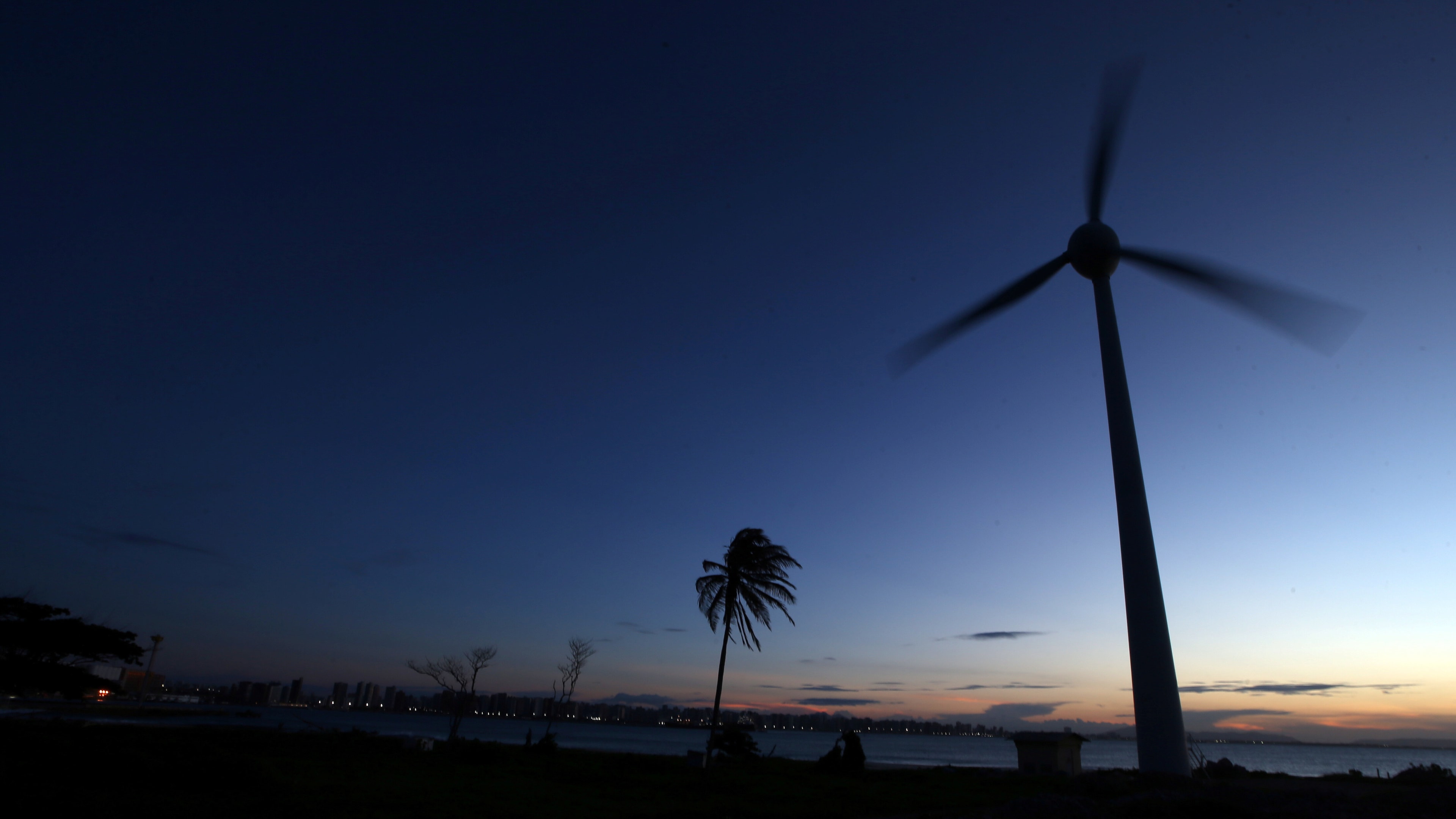5 unexpected places in the world for solar power generation
Solar power now accounts for almost a third of global renewable energy capacity.
Image: Unsplash/American Public Power Association
Stay up to date:
Decarbonizing Energy
Listen to the article
- Solar power now accounts for almost a third of global renewable energy capacity, according to IRENA.
- From golf courses to outer space, an increasing array of innovative sites are being used to build solar power facilities.
- But experts say that much more needs to be done to avoid the worst effects of climate change.
With governments around the world pledging to reach net-zero emission targets in the decades to come, the race is on to substantially increase renewable energy capacity.
Many countries in Europe are also scrambling to use green power to help wean themselves off Russian fossil fuel imports following the country’s invasion of Ukraine. Germany is particularly exposed and is accelerating its efforts to go greener.
What's the World Economic Forum doing about the transition to clean energy?
Solar power now accounts for almost a third of global renewable energy capacity, Forbes reports. And Germany is one country leading the charge.
A rapidly-built solar power plant situated on a quarry lake in the west of the country is expected to produce 3 megawatts of power – equivalent to an average onshore wind turbine. The facility on Lake Silbersee in Haltern am See comprises 5,800 modules on 360 floating elements.
It’s estimated that Germany could house around 20 gigawatts of solar energy on water – enough to keep the lights on in around 15 million homes. Floating systems are also regarded as sustainable and are quicker to install.
Lakes are arguably one of the more likely venues for solar panels. But they are not the only options. Here, we list some of the world’s more unusual solar panel spots.
1. Solar islands
Floating solar panels have been constructed off an island in the Maldives to generate electricity for a tourist resort. Generating a modest 680 kilowatts, it is so far one of the largest of its kind in the sea. Unlike lakes, the ocean presents challenges such as strong waves and salt water which can attack and erode the panels.
2. Solar roads
Solar technology is being experimented with on roads and pavements. A 70-metre ‘solar road’ bike path near Amsterdam in the Netherlands is lined with photovoltaic (PV) cells covered with tempered glass. In the first six months it generated 3,000 kilowatts of energy, enough to provide one person with enough electricity for a year.
3. Abandoned golf courses
With golf losing popularity in some parts of the world, solar power developers have been given the perfect environment to install large-scale power plants. Disused golf courses provide plenty of land, high sun exposure and a low concentration of trees.
4. Solar carports
In the United States, solar carports have been springing up. Utilizing the canopies covering the parked cars, these solar installations not only generate renewable energy but they also reduce the urban heat island effect, helping to cool cities. Additionally, of course, they can help recharge parked electric vehicles.
5. The race for space
The European Space Agency (ESA) is planning a three-year study to determine whether solar energy can be beamed to Earth from space.
Solar power satellites in geostationary orbit would "harvest sunlight on a permanent 24/7 basis then convert it into low-power density microwaves to safely transmit down to receiver stations on Earth", it says.
"The idea of space-based solar power is no longer science fiction," ESA scientist Dr Sanjay Vijendran told the BBC. "The potential is there, and we now need to really understand the technological path before a decision can be made to go ahead with trying to build something in space."
Meanwhile, the UK government is said to be considering building a massive solar power station in space – which would beam renewable energy back to Earth. The estimated price tag is an eye-watering $20 billion. With global energy needs predicted to increase by nearly 50% by 2050, space-based solar power could significantly help meet demand as well as limit global warming.
How bright is a solar-powered future?
As capital costs come down, the use of solar energy is going up. It accounts for 28% of the global renewable energy capacity, according to the International Renewable Energy Agency (IRENA). Wind power currently makes up 27% of green energy potential. Solar energy grew by 19% last year, with wind growing by 13%. Hydropower still makes up the lion’s share of renewable energy generation, but its share is now down to 40% and is expected to fall in the coming years.
Solar power generation still has room for improvement
However, there is still a long way to go before solar and other renewable energy sources really make a difference. “Despite the encouraging global trend,” IRENA Director-General Francesco La Camera told Forbes, “the energy transition is far from being fast or widespread enough to avert the dire consequences of climate change”.
There are also other hurdles in the way of a greener future. In the US, public opposition to solar power projects has stalled some of them and is threatening the progress of the Biden administration’s green agenda.
The World Economic Forum estimates that around 50% of the technologies needed to achieve net-zero emissions by 2050 are still in development and not yet available on the market.
Accept our marketing cookies to access this content.
These cookies are currently disabled in your browser.
Don't miss any update on this topic
Create a free account and access your personalized content collection with our latest publications and analyses.
License and Republishing
World Economic Forum articles may be republished in accordance with the Creative Commons Attribution-NonCommercial-NoDerivatives 4.0 International Public License, and in accordance with our Terms of Use.
The views expressed in this article are those of the author alone and not the World Economic Forum.
Forum Stories newsletter
Bringing you weekly curated insights and analysis on the global issues that matter.
More on Energy TransitionSee all
Tony Pan
August 27, 2025
Thomas Brostrøm and Sandeep Kashyap
August 26, 2025
Charles Bourgault and Sarah Moin
August 19, 2025
Jürgen Karl Zattler and Adrian Severin Schmieg
August 18, 2025
Piyush Verma
August 18, 2025








